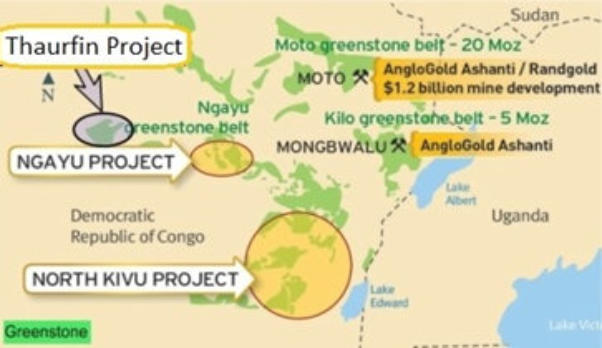
Alluvial gold was mined during the colony, before 1960, by 4 colonial companies.
Most of the prospectors was involved in alluvial and veins of quartz and ignored the
disseminated gold.
The most attractive deposits in the region are disseminations. They occur in
chemically responsive rocks : typically carbonates and pyritic or graphitic facies.
Gold reacts in BIFs (Banded Iron Formation) in a combination of chemical barrier
(iron oxides) and the high tectonic competence of the rocks.
These mining permits cover the same geological environment as the well-known
gold deposits in eastern of DRC.
This unexplored gold deposit should interest mining companies at a time where gold
is being discovered at a fraction of the rate needed to replenish reserves
The granite is the result of the slow cooling, in depth, of large masses of intrusive
magma which will most often form plutons, the latter finally outcropping by the
play of erosion which strips the overlying rocks. This is the part in pink on the
regional map below.


GOLD MINING
The
presence
of
gold
on
the
3
mining
polygons
will
allow
them
to
be
quickly
developed
and
to
obtain these long-term operating permits
The
3
mining
polygons
cover
rocks
on
the
edge
of
the
intrusive
granite
massif
that
have
undergone
metamorphism,
called
green
rocks
due
to
the
presence
of
green
minerals.
During
the
last
phase
of
consolidation
of
the
granite
massif,
called
the
hydrothermal
phase,
it
expels
aqueous
materials
under
high
pressure.
This
phase
is
responsible
for
gold
mineralization,
but
also
for
the
leaching
of
iron ore of sedimentary origin, called itabirite or BIF (Banded Iron Formation).